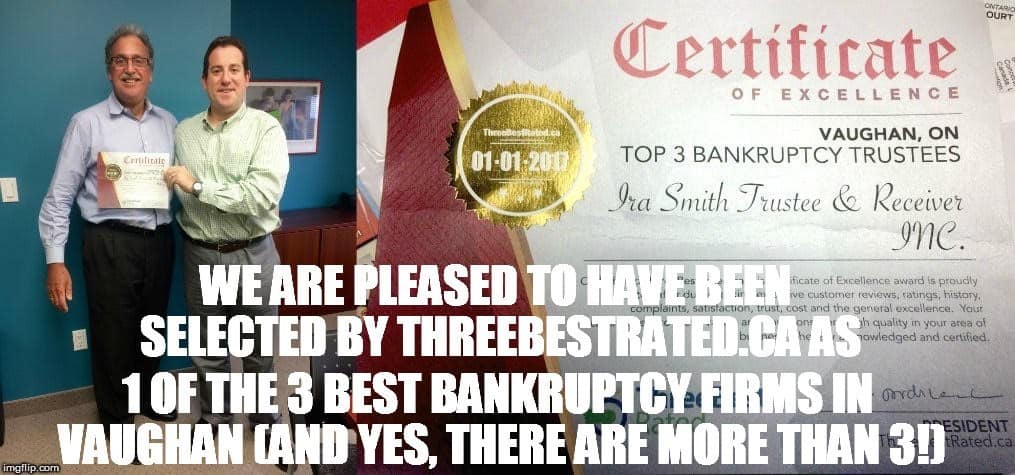Consumer proposal Ontario process: Livan Hernandez now
Livan Hernandez made a lot of money as a pitcher in major league baseball. Yet, according to court documents, in July 2017 he applied for Chapter 13 bankruptcy in Florida. He filed in federal court at Fort Lauderdale. The purpose of this blog is twofold: 1. to show that even if you have made millions in your career, you can still get into debt trouble; and 2. the consumer proposal Ontario process (Proposal, Plan or CP) which are similar to Chapter 13 US bankruptcy filings.
Hernandez, according to Baseball Reference, made more than $53 million in his job. He states that he owes up to 49 lenders between $500,000 and $1 million and he has $50,000 or less in assets.
The court documents show that most of the creditors he owes are banks and credit cards. He also owes the IRS.
Hernandez pitched for 17 years in the majors, on 9 teams. He played in 2 World Series, winning and making Series MVP honours with the Florida Marlins in 1997 and losing with the San Francisco Giants in 2002.
Consumer proposal Ontario process: Chapter 13 trustee office
Mr. Hernandez would have attended at the Chapter 13 trustee office to file under the US Bankruptcy Code. A chapter 13 bankruptcy is also called a wage earner’s plan. It enables people with regular income to develop a plan to repay all or part of their debts. The Canadian equivalent is our CP.
Consumer proposal Ontario process: The rich and famous have problems too
We have written about the rich and famous having debt problems before. Our previous blogs on this topic include:
- FAMOUS CELEBRITY BANKRUPTCIES HAPPEN TOO – July 30, 2013
- HIGH EARNERS LIVING PAYCHEQUE TO PAYCHEQUE – October 21, 2014
- 40 PARK LANE CIRCLE, 44 PARK LANE CIRCLE TORONTO FOR SALE: ARE FINANCIAL PROBLEMS CONTAGIOUS? – March 31, 2015
- BANKRUPTCY ALTERNATIVE: THE CLINTON PORTIS LIST FOR TURNING $40 MILLION INTO A BANKRUPTCY – January 11, 2016
- CONSUMER PROPOSAL PROCESS FOR LOTTERY WINNERS? BUT WHY? – January 18, 2016
- BANKRUPTCY OPTIONS: DO YOU REALLY NEED A $100K PERSONAL ASSISTANT? – August 22, 2016
- #VIDEO – SOMEONE STARTED A KANYE DEBT GOFUNDME: MY THREE CRUCIAL TACTICS TO SOLVE KANYE’S DEBT PROBLEMS# – January 25, 2017
Consumer proposal Ontario process: Just what is a consumer proposal?
This vlog offers the answer to one of the most asked Plan questions. A CP is available to people under the Bankruptcy and Insolvency Act (BIA). Teaming up with a licensed insolvency trustee (LIT) offering to administer your Plan you make an offer to:
- pay your creditors part of what you owe them over a period not greater than 60 months;
- lengthen the time you have to pay back your debts; as well as
- stay free from bankruptcy
Payments are made to the LIT. The LIT uses that cash to pay each of your creditors. The CP must be finished within 5 years.
Consumer proposal Ontario process: Who qualifies?
To meet the BIA requirements for a CP, you need to be an individual, not a company. Your overall financial debts need to not exceed $250,000 (not consisting of debts from a home mortgage, home equity line of credit or line of credit, secured by your principal residence).
You should also meet the insolvency requirements. This implies that:
- your debts are greater than the value of your assets;
- if you sold your assets you would not have appropriate funds to repay your monetary commitments totally;
- you are unable to pay your debts as they come due
Making simply the minimum monthly payment as disclosed on your credit card statements do not count as repaying your debts.
Consumer proposal Ontario process: What is the cost of a consumer proposal?
Your Plan repayments cover the expense for the consumer proposal. There are no different prices either for doing a consumer proposal or fees paid to the LIT to administer your Plan. The fee the LIT earns is calculated per the BIA.
Consumer proposal Ontario process: How long will my consumer proposal take?
A CP can last for no more than 5 years. Nonetheless, you can reduce the term either by 1. increasing the amount of your month-to-month repayment agreed to with your creditors in your Plan or; 2. by giving a round figure settlement all at once (if you could get an adequate amount from either a financial institution or family).
Consumer proposal Ontario process: What are the actions involved in a consumer proposal?
A CP allows you to pay all or part of your unsecured debt in regular monthly payments over an established period (again, not exceeding 60 months).
In composing your Plan, the LIT has to make sure that your CP provides a better outcome for your creditors compared to what they could expect to receive in your personal bankruptcy.
The typical actions of a LIT assisting you in your CP are:
- learn from you about your assets and liabilities;
- work with you to create a strategy that you both believe will serve the requirements of both you and those you owe;
- draft the Plan;
- send the Plan to the Office of the Superintendent of Bankruptcy;
- mail out the CP to your creditors who will have 45 days to accept or reject it.
The creditors can accept or reject your consumer proposal at a meeting of creditors if such a meeting was held. Usually, under a Plan, there is no need to hold a meeting.
Consumer proposal Ontario process: Can a consumer proposal stop debt collection agencies as well as prevent my wages from being seized?
Yes. As soon as the filing of a CP happens, all creditors must stop all legal action against you, including seizure activities (aside from any family law responsibilities under a proper settlement arrangement or court order).
Consumer proposal Ontario process: In a consumer proposal, will I turn over my residence as well as my auto?
Typically lending institutions who register a mortgage or various other security for financing are outside the CP procedure. It is the equity you have in your residence or auto that must be considered when you initially work out a budget and what type of Plan strategy you are going to make with your LIT.
If you have enough earnings to keep paying the mortgage against your home and/or your car loan as well as you wish to maintain the properties, you can do so. Again, your equity needs to be taken into consideration in the offer you make to your creditor. Also, your income, as well as costs, need to be evaluated to make certain you can pay for all these expenditures plus the regular monthly payment under your CP.
KEEP IN MIND: If you were to surrender your home or auto after declaring your Plan, you will not be spared the responsibility for any shortfall on your mortgage or auto loan given that the surrender took place after the filing of your CP.
Make certain that if you are giving back your home or auto to your lender, you await the bank to acknowledge that you have turned them over. Additionally, wait till they have begun their enforcement BEFORE you file your CP. That way any shortfall they experience will be a debt caught in your Plan
Consumer proposal Ontario process: Will I need to surrender my charge cards?
Typically, you must be prepared to give each of your charge cards to the LIT and you will not be able to ask for a brand-new credit card till after your Plan is completed. You can take advantage of a guaranteed/secured charge card.
If my creditors reject my CP or I fail to fully do it, will I automatically become bankrupt?
We highly recommend you to put your best foot forward when submitting your CP. We also recommend that you make your payments constantly on time. If your Plan is rejected by your creditors or you drop 3 payments behind, your CP will go into default. If that were to happen, you will no more have protection from your creditors and their collection initiatives.
Consumer proposal Ontario process: What should I do if I have too much debt?
If you’re thinking of a debt settlement program or are seeking methods to solve your debt problems and avoid bankruptcy, call Ira Smith Trustee & Receiver Inc. Our method is for every single person is to create an outcome where Starting Over, Starting Now comes true, starting the minute you walk in the door. You’re simply one call away from getting back on the road to leading a healthy, balanced and tension free life.





 Financial security planning process: Introduction
Financial security planning process: Introduction
 Borrowing in retirement: Introduction
Borrowing in retirement: Introduction
 I want to save money but how? Introduction
I want to save money but how? Introduction
 Types of Internet Scams: Introduction
Types of Internet Scams: Introduction